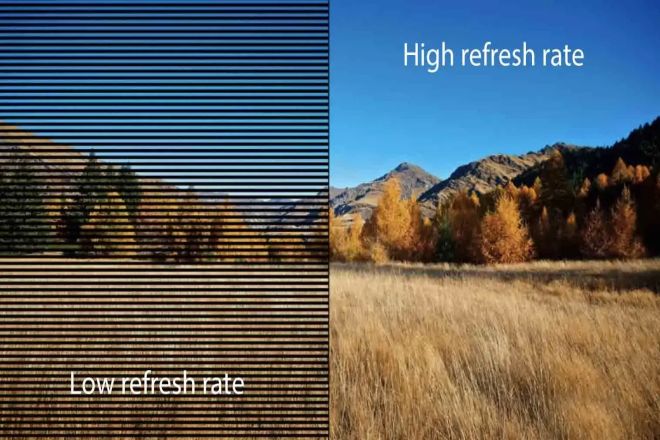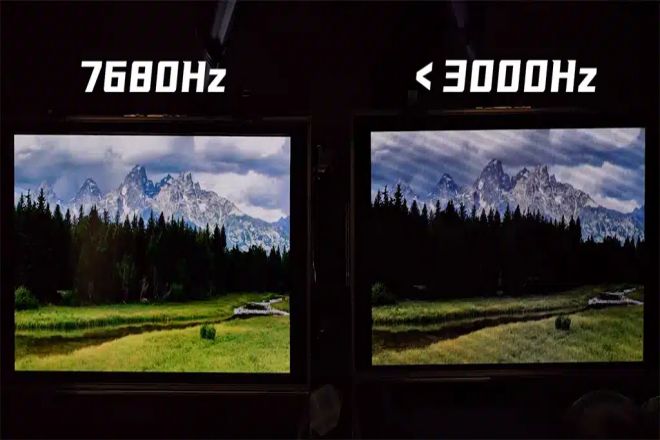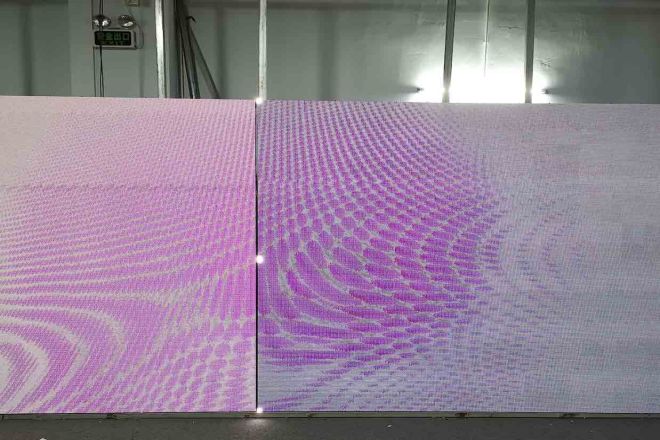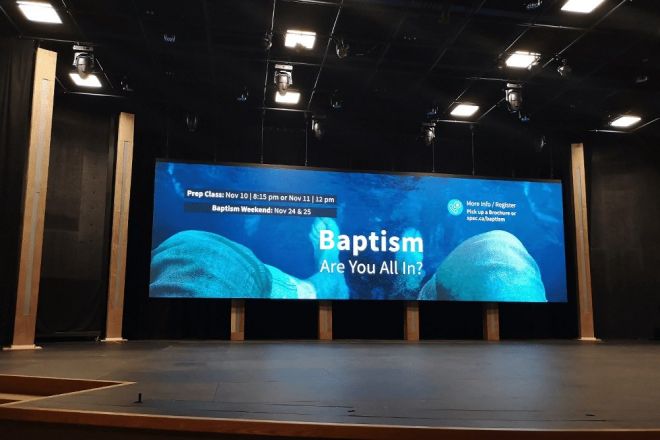Introducción

If you are in a shocking concert, the Pantalla LED sobre el escenario changes the gorgeous colors and pictures like magic, and all this smoothness and delicacy are inseparable from a secret weapon hidden behind its refresh rate. Refresh rate: This may sound a little strange, but in the world of LED displays, it is the key to determining whether the visual feast is perfect.
Today, let us unveil the mystery of the refresh rate of LED display and explore what magic it has? Why can it become the core indicator of LED display performance?
1. The impact of refresh rate on the viewing experience

- Visual comfort: protect your eyes
In the digital age, our eyes are almost always dealing with the screen. The frecuencia de actualización of LED display is the invisible shield that protects eyesight and improves visual comfort.
Imagine that when you are immersed in the wonderful moments of a movie or game if the screen refresh rate is insufficient, the picture will flicker slightly like an old movie film. This stroboscopic light is an unnecessary stimulation to the visual system, which can easily cause visual fatigue or even damage over a long period of time.
However, when the refresh rate of the LED display jumps to 1920Hz or even higher, this flicker that is almost imperceptible to the naked eye is completely eliminated, and the picture becomes stable and soft as if you are in a flicker-free visual paradise.
Such a viewing experience not only relaxes your eyes but also allows you to enjoy the fun brought by the digital world for a long time without feeling tired.
- Picture smoothness and clarity: Capture every wonderful moment
If visual comfort is the first surprise brought by the refresh rate, then the improvement of picture smoothness and clarity is another gift it gives. In the fast-paced modern life, we are eager to capture every fleeting moment, and the high refresh rate LED display is the right-hand man to realize this wish.
When the refresh rate is increased, the screen can update the picture faster, making the presentation of dynamic images more accurate and smooth.
Whether it is a fierce confrontation in a sports game or a galloping chase in the game world, a high refresh rate can ensure that the picture is free of smear and blur, making every detail clearly visible. This smooth and clear visual experience makes the viewer feel as if he is on the scene, breathing and sharing the same fate with the game or game.
In addition, when shooting and recording, high refresh rate LED display screens also show their extraordinary charm. It can restore the dynamic characteristics of the subject more realistically, reduce the jitter and blur of the picture caused by insufficient refresh rate, and make the works shot more vivid and realistic.
2. The impact of refresh rate on shooting effect

- Eliminating the water ripple phenomenon: restoring the pure beauty of the real world.
When shooting LED display screens, a common challenge is the appearance of the water ripple phenomenon.
This usually occurs when the refresh rate of the display screen does not match the shutter speed of the camera, resulting in unnatural ripples or stripes in the captured picture, which seriously affects the shooting effect. However, the emergence of a high refresh rate provides a solution to this problem.
When the refresh rate of the LED display screen is increased to a high enough level, such as 3840Hz or higher, the speed of updating the picture far exceeds the shutter speed of the camera. In this way, when the camera captures the picture, it sees a continuous and stable image rather than the intermittent fragments caused by insufficient refresh rate.
Therefore, the water ripple phenomenon is effectively eliminated, and the captured picture is purer and more natural, restoring the true color of the real world.
- High-definition fidelity: the truth is in the details
In addition to eliminating the water ripple phenomenon, a high refresh rate also brings another significant improvement in shooting effect-high-definition fidelity. In high-speed dynamic scenes, such as sports events, concerts, etc., LED displays need to present a lot of details and rapidly changing images.
If the refresh rate is insufficient, these details are easily blurred or lost in the rapid changes, resulting in a decrease in the quality of the captured images.
However, high-refresh-rate LED displays can capture and present these rapidly changing details more accurately. Its high-speed updated images ensure that each frame of the image is clear and sharp, and the stability and clarity of the image can be maintained even in fast-moving or complex scenes.
Therefore, the captured images are more detailed and detailed, meeting the needs of high-definition shooting so that every wonderful moment can be perfectly frozen.
3. The relationship between refresh rate and other performance indicators
When discussing the performance of LED displays, the refresh rate is not an isolated indicator. It has a close connection and mutual influence with multiple other performance indicators. The following will focus on the relationship between refresh rate power consumption and, heat dissipation and screen life.
- Consumo de energía y disipación de calor.
Although a high refresh rate can bring a smoother and clearer visual experience, it also means higher power consumption. Because a high refresh rate requires the screen to update the picture more frequently, more power is needed to drive the LED lamp beads to light up and down.
Therefore, while pursuing a high refresh rate, attention must be paid to the power consumption of the LED display.
High power consumption will not only increase operating costs but may also place higher requirements on the cooling system of the LED display.
Electrical energy generates heat in the process of converting it into light energy, and a high refresh rate exacerbates this process. If the cooling system cannot dissipate the generated heat in time, the temperature of the LED display will rise, which will affect its performance and life.
Therefore, when choosing an LED display, its refresh rate, power consumption, and heat dissipation performance need to be considered comprehensively.
Choosing LED displays that use energy-saving technology and have good heat dissipation performance can achieve low power consumption and long-term stable operation while ensuring a high refresh rate.
- Screen life
The refresh rate is also closely related to the life of the LED display. Although a high refresh rate itself does not directly shorten the life of the screen, an unreasonable refresh rate setting may accelerate the aging process of the screen.
For example, if the refresh rate is set too high and exceeds the tolerance of the LED display, it will cause the LED lamp beads to flash frequently, accelerating their aging and loss.
In addition, a high refresh rate may also increase the load on the internal components of the screen, such as the drive circuit, power supply, etc. These components are prone to failure or performance degradation under long-term high-load operation, thus affecting the life of the entire LED display.
Therefore, a reasonable refresh rate setting is crucial to extending the service life of the LED display. When setting the refresh rate, it is necessary to make a comprehensive consideration based on the actual performance and usage requirements of the LED display to avoid unnecessary damage to the screen due to excessively high or low refresh rates.
At the same time, it is also necessary to regularly maintain the LED display to extend its service life and maintain a good display effect.
4. Technical means to improve the refresh rate
In the process of pursuing a higher refresh rate for LED displays, technological innovation, and optimization have become indispensable keys. The following are two main technical means for improving the refresh rate of LED displays:
- High-performance driver chip
As one of the core components of the LED display, the performance of the driver chip directly affects the refresh rate of the screen. In order to improve the refresh rate, the use of high-performance driver chips such as high-definition high-order PWM (pulse width modulation) driver chips has become an important choice.
These driver chips have higher processing speeds and more precise control capabilities, can respond to signal changes more quickly, and accurately control the on and off state of LED lamp beads.
High-definition high-order PWM driver chips achieve smoother picture transitions and less flickering by finely adjusting the brightness changes of LED lamp beads, thereby improving the smoothness and clarity of the picture.
At the same time, high-performance driver chips can also reduce power consumption and improve stability, providing a strong guarantee for the long-term stable operation of LED display screens.
- Optimizing circuit design
In addition to using high-performance driver chips, optimizing the circuit design of LED display screens is also an important means of improving the refresh rate. The rationality of circuit design directly affects the efficiency and stability of signal transmission.
By optimizing the circuit design, the delay and interference in the signal transmission process can be reduced, and the transmission speed and accuracy of the signal can be improved.
Specifically, optimizing the circuit design includes measures such as improving the signal transmission path, using low-impedance materials, and increasing signal shielding. These measures can reduce the attenuation and distortion of the signal during transmission so that the signal can reach the LED lamp beads more quickly and accurately control its on-and-off state.
At the same time, optimizing the circuit design can also reduce the complexity and power consumption of the circuit and improve the efficiency and stability of the entire LED display screen.
5. Application scenarios and suggestions for selecting refresh rates

1). Refresh rate selection and application scenario analysis
1.1). Application scenario analysis
In the selection of refresh rates for LED display screens, there are significant differences in the demand for refresh rates in different application scenarios. Therefore, it is crucial to analyze the application scenarios reasonably and select the appropriate refresh rate.
For indoor full-color LED display screens, they are mainly used in scenes such as advertising displays, conference presentations, and stage backgrounds. In these scenes, the audience often has certain requirements for the smoothness and clarity of the picture, but they are not the ultimate pursuit. Therefore, a refresh rate of 1920Hz can usually meet general needs.
This refresh rate can not only ensure the basic smoothness of the picture but also effectively control the cost and power consumption and maximize the cost performance.
- Photography, videography, etc. Requirements:
When LED display screens are used in scenes such as photography and videography that require high-quality picture output, the refresh rate requirements are more stringent.
Due to the fast shutter speed of the camera and low refresh rate, display screens are prone to water ripples when shooting, which seriously affects the picture quality. Therefore, for such application scenarios, it is recommended to use a high refresh rate display screen of 3840Hz or above.
A high refresh rate can ensure the stability and clarity of the picture during shooting, reduce the jitter and blur of the picture caused by insufficient refresh rate, and improve the shooting effect.
- TV studio:
In the special and professional application scenario of a TV studio, the selection and configuration of the LED display screen are particularly important.
It not only carries multiple functions, such as real-time news broadcast, program production, and live broadcast but also serves as an important bridge connecting the audience and program content. One of the core functions of a TV studio is to conduct high-definition live broadcasts and real-time news broadcasts.
This requires that the LED display screen must have an extremely high refresh rate to ensure that the picture can be smooth and without ghosting when switching pictures quickly or displaying dynamic content. Usually, in TV studios, LED displays with a refresh rate of 3840Hz or higher are selected to meet the strict requirements of professional live broadcasts.
2). Selection suggestions
- Choose the appropriate refresh rate according to actual needs:
When choosing an LED display, you should first clarify the application scenario and actual needs. According to the characteristics of the scene and the audience’s requirements for picture quality, choose a reasonable refresh rate.
Avoid blindly pursuing high refresh rates and causing a waste of resources, and also ensure that the selected refresh rate can meet the actual application needs.
- Choose products from manufacturers with energy-saving qualifications and safety assurance certificates:
In addition to the refresh rate, the energy saving and safety of LED display screens are also important factors to consider when choosing.
It is recommended that products be chosen from manufacturers with energy-saving qualifications and safety assurance certificates. These products usually undergo strict quality testing and certification, which can ensure low power consumption, good heat dissipation performance, and stable and reliable safety during use.
At the same time, choosing products from well-known brands and high-quality manufacturers can also obtain better after-sales service and technical support to protect the long-term interests of users.
Conclusión
In summary, the refresh rate of LED display screens, as an important criterion for evaluating its performance, not only affects the smoothness and clarity of the picture but also directly affects the audience’s visual comfort and shooting effect.
With the continuous advancement of technology and the increasing diversification of needs, high refresh rate LED displays have become the mainstream trend in the market.
Finalmente, si quieres saber más sobre las pantallas LED, Por favor póngase en contacto con nosotros.
Not satisfied with reading yet? I believe the following articles will also help you:
